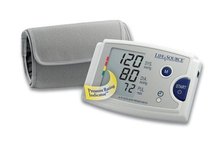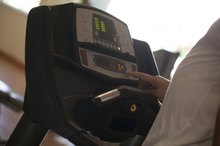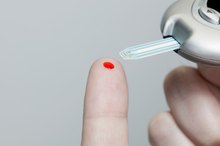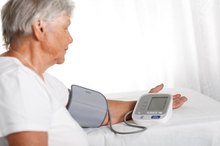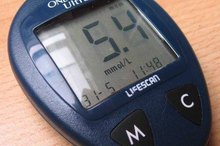How to Calibrate a Blood Glucose Monitor
Blood glucose monitors or glucometers are devices individuals with diabetes use to monitor their blood sugar levels daily. Glucometers give readings within five seconds of applying the test strip to a blood sample. For accurate readings, it is important to calibrate the blood glucose meter 1. Calibrating a meter is making sure the meter has the correct code to match the test strip. Some meters code automatically. Others, you must code or calibrate manually 1.
How to Calibrate a Blood Glucose Monitor Manually
Turn on your monitor or meter. If your meter requires you to insert one test strip at a time, it most likely has to be calibrated manually. Turn on the meter by inserting a test strip. Insert the test strip as far as it will go without bending the strip.
How to Assemble a Blood Pressure Cuff
Learn More
Watch for the coding numbers. When the meter turns on or lights up the display, there will be a coding number, if you used the meter before. If the meter is new, instead of a coding number, there will be dashes. You must enter the code number to calibrate the meter 1.
Look at the label on the test strip vial. The test strip vial has a coding number in bold print. This is the number you must enter into the meter. Enter the number by moving the up or down arrow. Once you have the correct number, hit the ok button on the meter. Your meter is now calibrated for the test strips.
- Turn on your monitor or meter.
- You must enter the code number to calibrate the meter 1.
How to Calibrate an Automatic Meter
How to Calibrate a Freestyle Glucometer
Learn More
Turn on the meter. Meters that have a 10-test disc usually calibrate automatically, such as the Ascensia Breeze 2 1. To turn on the meter, you usually have a button located at the top of the meter. Once the meter lights the display, it is ready.
Open the meter. Meters that have 10-test disc usually have a button to open the meter for access to the disc area. Once the meter is opened, place the disc in the meter making sure that you line up the disc with the provided space. Close the meter.
Check your meter display. Your meter is automatically calibrated once the disc is placed in the meter. It should light up on the display screen with directions for taking your blood sugar.
Tips
Check the expiration date of your test strips or disc. Expired test strips will not give accurate blood sugar readings. Keep the meter and test strips or disc in a cool, dry place.
Warnings
Do not refrigerate your meter or test strips.
- Meters that have a 10-test disc usually calibrate automatically, such as the Ascensia Breeze 2 1.
- Meters that have 10-test disc usually have a button to open the meter for access to the disc area.
Related Articles
References
- Why Calibrate
- Janapala RN, Jayaraj JS, Fathima N, et al. Continuous glucose monitoring versus self-monitoring of blood glucose in type 2 diabetes mellitus: A systematic review with meta-analysis. Cureus. 2019;11(9):e5634. doi:10.7759/cureus.5634
- American Diabetes Association. The big picture: Checking your blood glucose.
- American Diabetes Association. Blood gluocose monitors. 2020.
- National Institute of Diabetes and Digestive and Kidney Diseases. Continuous glucose monitoring. June 2017.
- Ekhlaspour L, Mondesir D, Lautsch N, et al. Comparative Accuracy of 17 Point-of-Care Glucose Meters. J Diabetes Sci Technol. 2017;11(3):558-566. doi:10.1177/1932296816672237
- U.S. Food & Drug Administration. Self-monitoring blood glucose test systems for over-the-counter use. Updated February, 8, 2018.
- Joslin Diabetes Center. Plasma glucose meters and whole blood meters. 2017.
- National Institute of Diabetes and Digestive and Kidney Diseases (NIDDK). Blood glucose control studies for type 1 diabetes: DCCT and EDIC.
Tips
- Check the expiration date of your test strips or disc. Expired test strips will not give accurate blood sugar readings.
- Keep the meter and test strips or disc in a cool, dry place.
Warnings
- Do not refrigerate your meter or test strips.
Writer Bio
Pauline Gill is a retired teacher with more than 25 years of experience teaching English to high school students. She holds a bachelor's degree in language arts and a Master of Education degree. Gill is also an award-winning fiction author.


